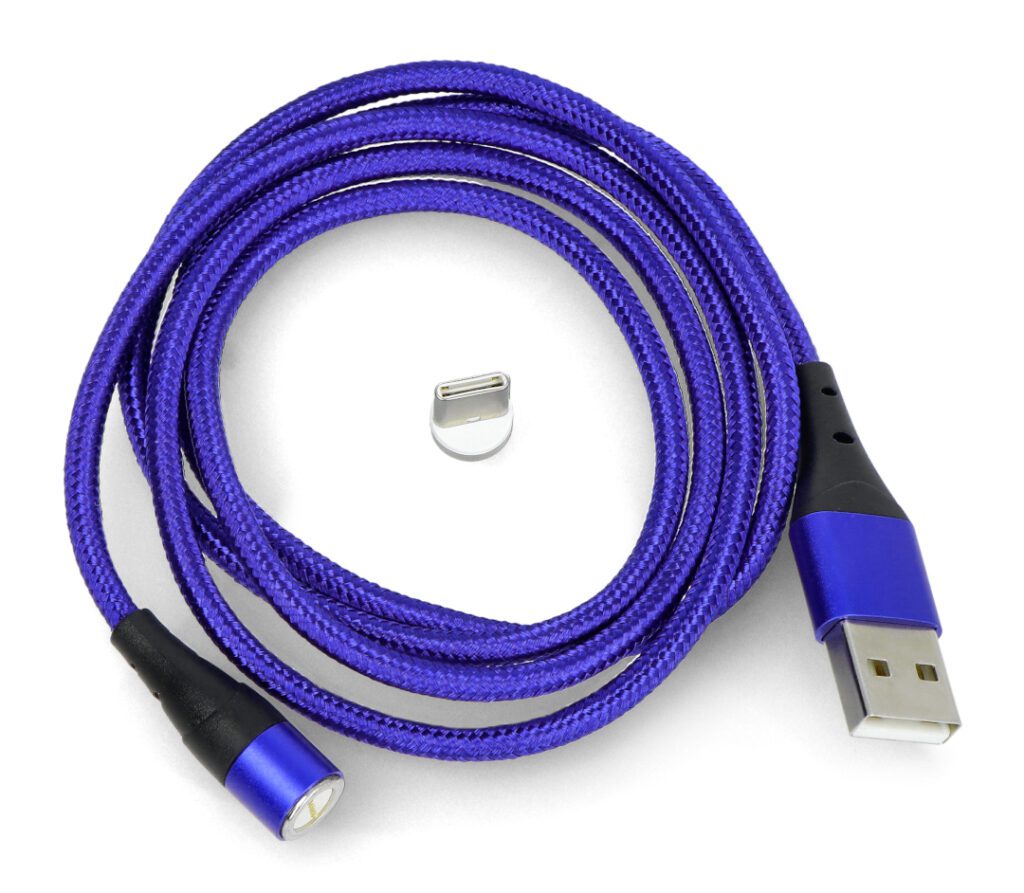Table of Contents:
Magnetic USB cable is a specific type of cable designed to transfer data and charge compatible power consumers.
USB magnetic cable - what is it?
Magnetic cable is most often used to replenish energy in mobile devices. In addition, it finds application in high-speed data transfer. The maximum speed of information transmission depends on the specific model of the cable. The magnetic properties of USB cables make it easy to connect the cable to devices without the risk of damaging the USB port. With cables of this type, connecting the plug to the socket, or more precisely to the adapter, even in total darkness, is no problem at all. The action of the neodymium magnets is strong enough that you only need to bring the end of the cable close to the adapter, without the need for a perfect fit.
Magnetic tip - basic information
The magnetic end of the USB cable is a small component designed to be inserted into a compatible USB socket. This is a key element that differentiates standard cables from magnetic versions. Its task is to provide a fast, easy and, above all, secure connection between the cable and the device. How is the magnetic tip constructed? The most important elements responsible for the magnetic properties of the tips are neodymium magnets, which are distinguished by a strong magnetic field, even for small sizes. Thanks to them, a secure and stable connection to the cable adapter is possible.
The magnetic tip is also equipped with electrical contacts, which are the points responsible for transmitting electricity between the energy source and the current receiver.
Materials with high current conductivity and low resistance (such as gold) are used for contacts. Insulating materials are used to protect electrical contacts, which provide effective protection, among other things. Before short circuit. The outer part of the tip is a housing made of durable plastic or metal, for example. The purpose of the housing is to protect the tip from mechanical damage.
Magnetic cable - how is the transmission of energy through the tip done?
When the magnetic tip is connected to the adapter, the electrical contacts are also connected. Such a solution allows electricity to flow, for example, from the home installation to the charger, then through the wire to the connected device. The interconnected contacts also allow data to be transmitted in both directions. The construction of the contacts is designed to ensure optimum energy flow, with low losses at the same time.
In addition, the tips are protected from corrosion, so they stand out for their long life and reliable performance. In addition, the magnetic tip guarantees safe use. If the cable is suddenly jerked, the tip will disconnect from the device, thus protecting the USB port from damage. Depending on the specific model, it is designed for USB-A ports, USB-C or micro USB.
Magnetic adapter - properties
The adapter is the second key component of the magnetic cable. This part connects to the magnetic tip, so it provides a stable connection. The adapter contains neodymium magnets, which attract magnets permanently located in the tip. In practice, this means instant and stable connection. This solution allows charging and data transfer, identical to standard cables, but with the added benefit of magnetic components.
Individual magnetic cables, and therefore adapters, differ in their maximum data transfer speed. The most popular standards are USB 2.0, 3.0 and 3.1. It is worth paying special attention to the maximum charging current of the magnetic cable. Selected models are designed to support fast charging standards, that is, high voltage and current. Why is this important? Due to the time required to replenish energy in batteries distinguished by their high capacity. High-speed charging standards make it possible to safely cut this time in half (or more).
Magnetic cable - advantages
The popularity of USB magnetic cables is due to, among other things. Of comfortable use, durability and reliability. Thanks to the use of neodymium magnets, the force with which the adapter attracts the tip is the same, even when used intensively for a long time. Magnetic cables are used, among other things. by people who frequently charge electronic devices in various places and conditions.
The cable itself can be protected by various types of braiding. Selected models are equipped with a flexible and durable braid to protect against mechanical damage. On the market you can find magnetic cables equipped with optical indication of the operating status in the form of an LED. Emitting a green light indicates that the connected device is currently charging. As with standard USB cables, the magnetic versions come in a variety of lengths, so each user can match a specific model to their preferences. When replenishing energy from powerbanks short cables work best to reduce the risk of entanglement. On the other hand, when charging equipment located on a desk from an electrical outlet, longer versions, such as 1.5 meters, will work better.
What else is worth knowing about magnetic cables?
Modern magnetic cables are equipped with numerous safety features to protect both the cable itself and the charger and connected devices. Manufacturers use protection against overheating, overloading, overcharging and overvoltage. The intelligent control system automatically controls the current and voltage, adjusting the electrical parameters to the requirements of the energy consumer.
How useful was this post?
Click on a star to rate it!
Average rating 0 / 5. Vote count: 0
No votes so far! Be the first to rate this post.




















